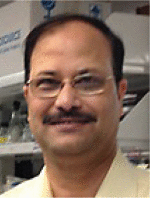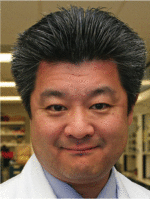Sphingosine-1-phosphate (S1P) is a bioactive lipid mediator produced inside cells through phosphorylation of sphingosine by two sphingosine kinase isotypes, SphK1 and SphK2 [1]. SphK1 is located in the cytosol adjacent to the cell membrane where its substrate, sphingosine, resides. S1P generated by SphK1 is exported out of the cell and binds to specific cell surface G-protein-coupled receptors, S1PR1–5, in an autocrine and/or paracrine manner through a process coined as ‘inside-out signaling’ [2]. S1P signaling regulates various physiologic and pathologic processes critical for cancer progression, such as cell survival, migration and angiogenesis. On the other hand, SphK2 is located in the cell nucleus and mitochondria. SphK2 produces S1P in the cell nucleus and inhibits histone deacetylases (HDACs) [3], and regulates lipid metabolism after bile acid stimulation in hepatocytes [4]. Intracellularly, S1P levels are believed to be regulated mainly by S1P lyase, which converts S1P irreversibly to ethanolamine and hexadecanol. S1P plays a significant role in intracellular signaling by acting as a second messenger and regulating calcium mobilization. Additionally, S1P plays an important role in TNF-α signaling and the canonical NF-κB activation pathways that are important in inflammatory and immune processes [5]. S1P in the cell is also linked to IL-1-induced expression of the chemokines CXCL10 and CCL5 that recruit mononuclear cells into sites of sterile inflammation [6].
S1P plays crucial roles in cancer biology. It was first shown to promote cell growth and proliferation as well as effectively oppose cell apoptosis two decades ago [7]. S1P is generated through the phosphorylation of sphingosine, which is synthesized from ceramide. Ceramide and sphingosine are known to be proapoptotic, as opposed to S1P, which is a known cell survival factor. Thus, intracellular balance of ceramide, sphingosine and S1P, coined the ceramide–sphingosine–S1P rheostat, is considered an important mechanism that determines cell fate [7]. SphK1 that phosphorylates sphingosine has been found to be an oncogene, and overexpression of the SphK1 gene is tumorigenic. A microarray analysis has demonstrated the strong prognostic significance of SphK1 in breast cancer. High levels of S1PR1 and S1PR3 expression are also linked with poor prognosis in estrogen receptor (ER)-positive breast cancer patients, and S1PR4 expression is linked with poor prognosis in ER-negative breast cancer patients. Under inflammatory conditions, S1P-induced transcriptional activation of C-reactive protein (CRP) contributes to the invasive phenotype of human breast epithelial cells.
It has become increasingly evident that tumor microenvironment plays a key role in multiple stages of cancer progression. The tumor microenvironment comprises blood and lymphatic vessels, fibroblasts and immune cells such as bone marrow derived inflammatory cells and lymphocytes. Cancer cells influence the tumor microenvironment by releasing extracellular signals that promote angiogenesis and induce peripheral immune tolerance, while immune cells present in the microenvironment affect the growth, evolution and spread of cancer cells. Therefore, it is thought that cancer cells do not manifest cancer alone, but rather conscript and corrupt normal resident and recruited cells into the microenvironment. Cooperative interactions between cancer cells and these stromal cells allow cancer to progress by processes of tumor growth, invasion and metastasis.
Angiogenesis, the development of new blood vessels from pre-existing vessels, determines the rate of growth and progression of cancer by providing oxygen, nutrition and conduits for cancer cells to invade and metastasize. It is known that a tumor cannot grow bigger than 3 mm without angiogenesis. Hla and colleagues reported that endothelial cells, essential to angiogenesis, synthesize and release endogenous S1P. In agreement, Sabatini and colleagues showed that the neutralization of extracellular S1P with an anti-S1P antibody showed significant inhibition of angiogenesis, tumor growth and metastasis, further confirming the dominant role of extracellular S1P in angiogenesis. Numerous studies have been conducted in the role of S1P in angiogenesis, where it appears to be one of the major site of action [8].
Although it is yet to be thoroughly investigated, the role of S1P in lymphatic vessel development in the tumor microenvironment, coined lymphangiogenesis, cannot be underestimated. Lymphatic vessels drain lymphatic fluid, which is the major component of extracellular fluid in the tumor microenvironment. Lymphatic fluid serves as the main channel through which recruited cells mobilize. Lymphatic fluid also provides conduits for breast cancer cells to metastasize to the lymph nodes, which is a well-established first site of metastasis [9].
Inside-out signaling of S1P, whereby the intracellularly produced S1P is secreted out of the cell and exerts its biological effects via activation of specific S1P receptors, has been repeatedly shown to play a major role in the breast cancer tumor microenvironment through angiogenesis and lymphangiogenesis [10]. As S1P possesses a polar head group, S1P generated inside the cells is unable to freely pass through cell plasma membranes. Multidrug-resistant proteins, ATP-binding cassette (ABC) transporters ABCC1 and ABCG2, function to export S1P from MCF7 human breast cancer cells after estradiol stimulation [11]. The authors also found that SphK1, but not SphK2, increased estradiol-induced export of S1P from breast cancer cells, which is in agreement with the intracellular location of the enzymes [11]. Utilizing a SphK1-specific inhibitor, they found that SphK1 promotes breast cancer progression by tumor-induced angiogenesis and lymphangiogenesis [12]. This result is in agreement with clinical observations utilizing tissue microarrays of 281 human breast cancer samples, where high expression of ABCC1 or ABCC11 transporters was associated with significantly shorter disease-free survival [13]. Given these experimental and clinical findings, it is highly likely that cancers with a high expression of ABC transporters demonstrate high recurrence rate not only because ABC transporters secrete medications out of the cells, but also because ABC-mediated export of S1P stimulates angiogenesis and lymphangiogenesis, thereby contributing to an aggressive phenotype of cancer progression and metastasis [14,15].
Breast cancer is known to evoke an inflammatory response that results in the recruitment of inflammatory cells into the tumor microenvironment. The authors have identified that S1P is linked to inflammation and cancer in the tumor microenvironment [16]. Extracellular S1P activates S1PR1, which induces STAT3 activation that enhances transcription of its inflammatory target genes and S1PR1. Intracellular S1P is involved in NF-κB activation that regulates transcription of pro-inflammatory cytokines such as TNF-α and IL-6, and also induces STAT3 activation. TNF-α can further stimulate SphK1 to amplify NF-κB activation. Tumor-associated macrophages generate and secrete IL-6, which potentiates the amplification loop formed between cancer cells and stromal cells linked by S1P. Extensive study is warranted on the role of S1P in tumor microenvironment, particularly on trafficking and functions of infiltrating inflammatory cells, as these pathways have strong potential to be translated to the clinic. The authors’ group has established syngeneic murine metastatic breast cancer models that allow study of the intact immune function, which can be a useful tool for preclinical studies to deepen future research in this field [17–19].
Multiple strategies to target S1P signaling have been tested in preclinical models. A specific SphK1 inhibitor, SK1-I, significantly suppressed breast cancer progression by inhibition of angiogenesis and lymphangiogenesis [12]. Together with the fact that the PF543 compound, another potent SphK1 specific inhibitor, did not suppress cancer cell proliferation in vitro, the anti-tumor effect of S1P targeted therapy may be due to its effect on the tumor microenvironment rather than on cancer cells alone. FTY720 (fingolimod, Gilenya) is a sphingosine analog prodrug approved by the US FDA for the treatment of multiple sclerosis [2]. FTY720 binds to all S1P receptors, except S1PR2 after it is phosphorylated by SphK2. It then internalizes the receptors, thus acting as a functional antagonist. One of the most prominent symptoms of systemic administration of FTY720 is marked peripheral lymphocytopenia, which highlights the fact that lymphocyte egress from the lymph node is the most relevant physiological role of S1P signaling in vivo. This also explains the mechanism whereby FTY720 is effective for multiple sclerosis, which is currently believed to be partly due to autoimmune processes. The authors have used FTY720 in murine colitis associated colon cancer models and found that it not only suppressed tumorigenesis, but also limited cancer progression, which implicates S1P signaling in both mechanisms [16]. Since SphK2 is located in the nucleus and phosphorylates the majority of FTY720, phosphorylated FTY720 accumulates in the nucleus of breast cancer cells. The authors recently reported that nuclear phosphorylated FTY720 is an effective inhibitor of class I HDACs that enhance histone acetylation and regulates expression of a restricted set of genes including the expression of ER in ER-negative breast cancer cells [20]. Thus, this may provide a therapeutic option to treat this subset of patients.
In conclusion, S1P signaling has been shown to play critical roles in the tumor microenvironment, and it may provide a novel target for treatment of breast cancer.
Acknowledgments
Financial disclosure
This work was supported by the US NIH under grant R01CA160688 to K Takabe.
No writing assistance was utilized in the production of this manuscript.
Biographies

Partha Mukhopadhyay

Rajesh Ramanathan

Kazuaki Takabe
Footnotes
Competing interests disclosure
The authors have no other relevant affiliations or financial involvement with any organization or entity with a financial interest in or financial conflict with the subject matter or materials discussed in the manuscript apart from those disclosed.
References
- 1.Maceyka M, Spiegel S. Sphingolipid metabolites in inflammatory disease. Nature. 2014;510(7503):58–67. doi: 10.1038/nature13475. [DOI] [PMC free article] [PubMed] [Google Scholar]
- 2.Takabe K, Paugh SW, Milstien S, Spiegel S. ‘Inside-out’ signaling of sphingosine-1-phosphate: therapeutic targets. Pharmacol Rev. 2008;60(2):181–195. doi: 10.1124/pr.107.07113. [DOI] [PMC free article] [PubMed] [Google Scholar]
- 3.Hait NC, Allegood J, Maceyka M, et al. Regulation of histone acetylation in the nucleus by sphingosine-1-phosphate. Science. 2009;325(5945):1254–1257. doi: 10.1126/science.1176709. [DOI] [PMC free article] [PubMed] [Google Scholar]
- 4.Nagahashi M, Takabe K, Liu R, et al. Conjugated bile acid-activated S1P receptor 2 is a key regulator of sphingosine kinase 2 and hepatic gene expression. Hepatology. 2015;61(4):1216–1226. doi: 10.1002/hep.27592. [DOI] [PMC free article] [PubMed] [Google Scholar]
- 5.Alvarez SE, Harikumar KB, Hait NC, et al. Sphingosine-1-phosphate is a missing cofactor for the E3 ubiquitin ligase TRAF2. Nature. 2010;465(7301):1084–1088. doi: 10.1038/nature09128. [DOI] [PMC free article] [PubMed] [Google Scholar]
- 6.Harikumar KB, Yester JW, Surace MJ, et al. K63-linked polyubiquitination of transcription factor IRF1 is essential for IL-1-induced production of chemokines CXCL10 and CCL5. Nature Immunol. 2014;15(3):231–238. doi: 10.1038/ni.2810. [DOI] [PMC free article] [PubMed] [Google Scholar]
- 7.Spiegel S, Milstien S. Sphingosine-1-phosphate: an enigmatic signalling lipid. Nat Rev Mol Cell Biol. 2003;4(5):397–407. doi: 10.1038/nrm1103. [DOI] [PubMed] [Google Scholar]
- 8.Huang WC, Nagahashi M, Terracina KP, Takabe K. Emerging role of sphingosine-1-phosphate in inflammation, cancer, and lymphangiogenesis. Biomolecules. 2013;3:3. doi: 10.3390/biom3030408. [DOI] [PMC free article] [PubMed] [Google Scholar]
- 9.Takabe K, Spiegel S. Export of sphingosine-1-phosphate and cancer progression. J Lipid Res. 2014;55(9):1839–1846. doi: 10.1194/jlr.R046656. [DOI] [PMC free article] [PubMed] [Google Scholar]
- 10.Kim RH, Takabe K, Milstien S, Spiegel S. Export and functions of sphingosine-1-phosphate. Biochim Biophys Acta. 2009;1791(7):692–696. doi: 10.1016/j.bbalip.2009.02.011. [DOI] [PMC free article] [PubMed] [Google Scholar]
- 11.Takabe K, Kim RH, Allegood JC, et al. Estradiol induces export of sphingosine 1-phosphate from breast cancer cells via ABCC1 and ABCG2. J Biol Chem. 2010;285(14):10477–10486. doi: 10.1074/jbc.M109.064162. [DOI] [PMC free article] [PubMed] [Google Scholar]
- 12.Nagahashi M, Ramachandran S, Kim EY, et al. Sphingosine-1-phosphate produced by sphingosine kinase 1 promotes breast cancer progression by stimulating angiogenesis and lymphangiogenesis. Cancer Res. 2012;72(3):726–735. doi: 10.1158/0008-5472.CAN-11-2167. [DOI] [PMC free article] [PubMed] [Google Scholar]
- 13.Yamada A, Ishikawa T, Ota I, et al. High expression of ATP-binding cassette transporter ABCC11 in breast tumors is associated with aggressive subtypes and low disease-free survival. Breast Cancer Res Treat. 2013;137(3):773–782. doi: 10.1007/s10549-012-2398-5. [DOI] [PMC free article] [PubMed] [Google Scholar]
- 14.Aoyagi T, Nagahashi M, Yamada A, Takabe K. The role of sphingosine-1-phosphate in breast cancer tumor-induced lymphangiogenesis. Lymphat Res Biol. 2012;10(3):97–106. doi: 10.1089/lrb.2012.0010. [DOI] [PMC free article] [PubMed] [Google Scholar]
- 15.Takabe K, Yamada A, Rashid OM, et al. Twofer anti-vascular therapy targeting sphingosine-1-phosphate for breast cancer. Gland Surg. 2012;1(2):80–83. doi: 10.3978/j.issn.2227-684X.2012.07.01. [DOI] [PMC free article] [PubMed] [Google Scholar]
- 16.Liang J, Nagahashi M, Kim EY, et al. Sphingosine-1-phosphate links persistent STAT3 activation, chronic intestinal inflammation, and development of colitis-associated cancer. Cancer Cell. 2013;23(1):107–120. doi: 10.1016/j.ccr.2012.11.013. [DOI] [PMC free article] [PubMed] [Google Scholar]
- 17.Rashid OM, Nagahashi M, Ramachandran S, et al. Resection of the primary tumor improves survival in metastatic breast cancer by reducing overall tumor burden. Surgery. 2013;153(6):771–778. doi: 10.1016/j.surg.2013.02.002. [DOI] [PMC free article] [PubMed] [Google Scholar]
- 18.Rashid OM, Nagahashi M, Ramachandran S, et al. An improved syngeneic orthotopic murine model of human breast cancer progression. Breast Cancer Res Treat. 2014;147(3):501–512. doi: 10.1007/s10549-014-3118-0. [DOI] [PMC free article] [PubMed] [Google Scholar]
- 19.Rashid OM, Takabe K. Animal models for exploring the pharmacokinetics of breast cancer therapies. Expert Opin Drug Metab Toxicol. 2015;11(2):221–230. doi: 10.1517/17425255.2015.983073. [DOI] [PMC free article] [PubMed] [Google Scholar]
- 20.Hait NC, Avni D, Yamada A, et al. The phosphorylated prodrug FTY720 is a histone deacetylase inhibitor that reactivates ERalpha expression and enhances hormonal therapy for breast cancer. Oncogenesis. 2015;4:e156. doi: 10.1038/oncsis.2015.16. [DOI] [PMC free article] [PubMed] [Google Scholar]


